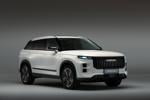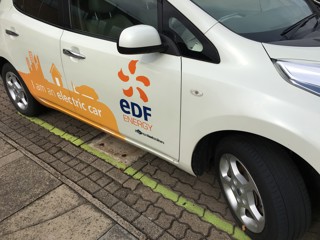This autumn a major trial installed the first vehicle-to-grid chargers in the UK, marking the start of an experiment that could see electric vehicles (EVs) start to solve the massive energy demand they will place on the national grid without the need to build new power stations.
Experts forecast that EVs will account for 5% of energy demand by 2040. But smart use of their electricity storage capabilities could help the national grid meet surges in demand with fleets providing their own solution.
Vehicle to grid (V2G) technology is the next step in intelligent electricity use; it sees EVs recharge their batteries when demand on the grid is low, and potentially feeding the grid when energy demand is high.
The technology could also prove vital in making electricity generation from renewable sources more viable, by facilitating the storage of power to feed back into the grid when the sun is not shining or the wind is not blowing.
Marco Landi, innovation lead – V2G & EV charging at Innovate UK, said electricity consumption from EVs will rise to 1,800 TWh (terawatt hours) by 2040 from six TWh in 2016.
This has the potential to create demand peaks between 5GWh (gigawatt hours) and 18GWh by 2050 unless smart charging is introduced.
However, EVs could “act as controllable loads, to smooth demand peaks and act as distributed storage, providing energy back to the grid”, said Landi.
The technology should also see vehicle owners, including fleets, compensated for allowing their EVs to be used.
But barriers stand in the way of this smart future, including the regulatory environment, the development of affordable hardware, and the need to test the impact of V2G in action on the life of vehicle batteries.
Innovate UK is funding eight projects involving 2,700 vehicles in V2G trials to test not simply the technology but also consumer attitudes.
“V2G is using an available asset sitting unused for 90% of the time,” said Landi. “But it needs to be a choice not an obligation. V2G business models need to find a way to compensate EV drivers, and customers need to be continuously engaged in the process.”
In theory, the UK ought to be the ideal test bed for V2G systems, given the country’s deregulated energy market. But it is far from straightforward, said Mark Trahand, vice-president marketing, Nuvve, which claims to have the world’s only commercially-ready V2G system.
Connection to a local grid can take six months, there’s no guarantee that HMRC won’t tax EV owners on any revenue raised from selling electricity back to the grid, and the hardwear is still in its infancy.
“We are seeing a lot of constraints. The energy markets need to be adapted so V2G can obtain maximum revenues from them,” said Trahand.
“In the UK we will be providing commercial services mostly to fleets to start off, and we’re looking forward to having more and more EVs in the UK connected to the grid.
"We spend a lot of time trying to explain to car manufacturers that if they want their EV to be optimal it needs to be bidirectional. Once consumers understand bidirectional cars, that’s what they’ll be buying. Car manufacturers will step up to this.”




















Login to comment
Comments
No comments have been made yet.